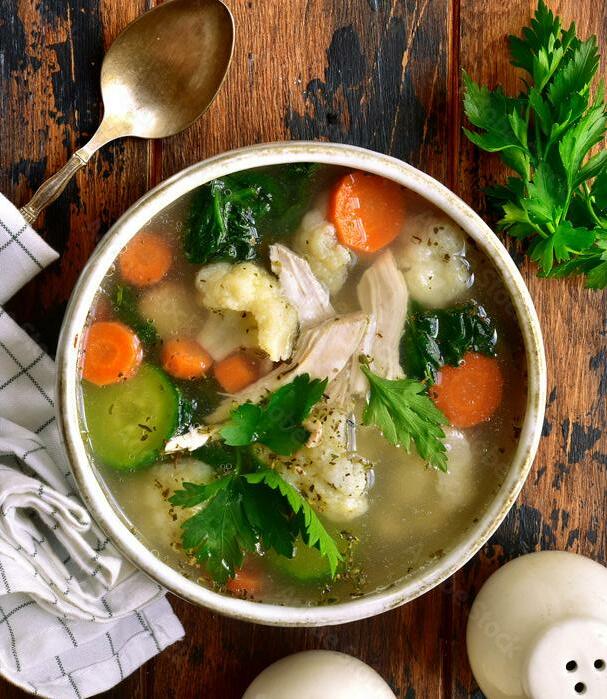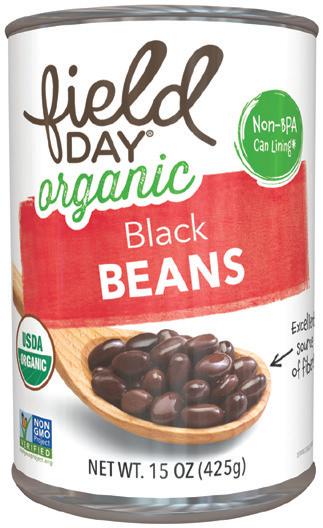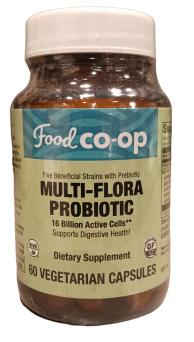
THIS ISSUE: Basically Delicious, Budget Friendly Immune Supplements, Board basics and More Back to Basics FREE AROUND THE TABLE Winter 2023 THE FOOD CO-OP QUARTERLY NEWSLETTER
Board of Directors
Juri
Around The Table is published by The Food Co-op on a quarterly basis and comes out in the winter, spring, summer, and fall. If you are interested in contributing content for Around The Table, please contact marketing@foodcoop.coop to discuss your article idea. Articles should include stories about food, community, sustainability, or cooperation.
Back to Basics with the GM
BY KENNA S. EATON, GENERAL MANAGER


Prices are on the rise, and it can be painful. Recently, on the way back from a hike, I stopped by a market to grab a drink and a bag of chips (post hike salty, crunchy is always welcome). Up at the register the clerk was super friendly, then I heard the total and felt that inner gasp: over $11! For just a drink and chips?? Yup. That was correct.Dang. The Co-op has always been focused on offering good, healthy food, and yes, it comes at a price, especially for organic. But while our chips and soda can be expensive, what isn’t expensive are the basics: beans, rice, grains, veggies, etc. Less processed, better nutrition for us (and the environment), and more affordable. What a deal! Recognizing that we can’t just eat raw oats or tofu all the time (or perhaps simply don’t want to), in the early 2000s the Co-op created the “Market Basket”: a group of basic items that we committed to keep affordable by lowering the price. But the cost came out of our pockets. Then in the next decade, we changed up the program by adding even more items, and we called it Centsibles. Fast forward to the next decade and our Co-op of co-ops, the National Cooperative Grocers (NCG), created their own version called Co+op Basics, a program supported by deals the NCG negotiated for us. The NCG is basically a co-op formed by all the natural food Co-ops because we recognized the need to join together to leverage our impact. Over the years NCG has developed multiple programs on our behalf, designed to help individual co-ops, like ours, with cost savings or promotions. Co+op Basics is only one of the many programs we opt to participate in (we can pick and choose which programs we use). But in this instance the buying power of all the Co-ops across the country has allowed us to save money and pass those savings on to you, our members, with what we think of as our version of a “private label”—a co-op one! These products still meet all our buying guidelines, are mostly organic, and yet they come to the shelf at a lower cost to us and in turn to you. If you haven’t taken the time to check them out, please do. The Co-op exists to nourish our community, and as our Ends say, we want to serve our community well (check out all our Ends at LINK to Ends on website), so this year we’ll be focusing on more ways to help you save money by adding more Co+op Basics, leveraging more great deals (like those BOGOs—buy one, get one free deals), and helping you find ways to save money while filling your pantry, even with chips! Remember, we’re in this together and we’re here for you.

2
General Manager
Kenna Eaton
Managing Editor
Andrea Stafford
Layout Christopher Bunch
Copy Editors
Lisa Barclay
Contributors
Lisa Barclay, Kenna Eaton, Owen Rowe, Micael Flowers, Sidonie Maroon and Liam Cannon
Jennings, Claire Thomas, Michael Flowers, Dave Dunn, Lisa Barclay, Owen Rowe
Board Basics
BY OWEN ROWE, TREASURER
Like other work groups, the Food Co-op’s board of directors has felt the effects of the “Great Resignation.” We’re now into our second year of operating with the minimum number of directors required by our Bylaws. We need more board members!
We’ve already gone “back to basics” on board work. We’ve streamlined our calendar, cutting meetings down to the minimum. We’ve extended timelines on big tasks like the renewal of our Strategic Plan. And we’ve rearranged our jobs, combining two old committees into the new Board Service Committee. Its role is to ensure that we recruit and retain the best board possible—and provide them with the support, information, and tools to excel.
We’re simplifying the candidate process. To serve on the Food Co-op board, you don’t have to know about food or business—but it does help if you’re passionate about cooperation and patient with the systems we’ve developed over the decades to guide our work together. You’ll be providing important direction to the Co-op, and in return we’ll be giving you valuable skills and experience. There are some parts of the board’s job that are unique to the co-op world, but there are plenty of skills like running meetings, reviewing finances, making decisions, and facilitating discussions which can apply to any type of organization.

To help ensure that more Co-op members have access to the opportunity of board service, board members receive monthly stipends and other benefits. And like many other groups, the board has been working remotely, meeting on Zoom. We do hope we can go back to meeting in person soon—and the camaraderie and shared food!
Maybe you can make time to expand your horizon and join our circle? Elections aren’t until next summer, but it’s never too soon to start learning about the board. Send an email to coopboard@foodcoop.coop and let us know what piqued your interest. And thank you for considering working together to nourish our community!
3
LETTUCE WORK Together LETTUCE WORK Together
an email to
Send
coopboard@foodcoop.coop
BY LISA BARCLAY, BOARD SECRETARY

The board is beginning the process of reviewing and revising The Food Co-op’s Ends, which are our overarching goals as a cooperative. (For a little background, see my article in the previous issue of Around the Table.) To help that work, the board will be outside the store four times in January to talk to members about our Ends, and in February, we’ll be sending out a survey by email. You can stop by to talk to us on select days in January, We’ll be asking you which Ends are most important to you and if there is anything we might want to add or subtract. Then keep an eye out in February for an email from the Co-op with a short survey about our Ends. Participating in the survey will make you eligible for a drawing for a $100 Co-op gift card, plus we will donate $1 to the food bank for every member who completes the survey!
The Food Co-op Ends
As a result of all we do:
1. Market Relevance - Our community is well-served by a strong cooperative grocery store, integral to the lives of our customers, our farmers, and our producers.
2. Food System Development - Our community has a resilient local and regional food economy, supported by our Co-op and our community partners.
3. Thriving Workplace - Our staff and board have the knowledge, skills, and passion to make our cooperative thrive.
4. Environmental Sustainability - Our members and customers are proud to shop at a local cooperative grocery that is working to reduce its impact on the environment.
5. Outreach - Our community is informed, engaged, and empowered to join us in making a difference
4
What is most important to us! Talk with the Board In-Store! JANUARY Thursday 5th 10 to 12 pm Sunday 8th 11 to 1 pm Saturday 14th 3 to 5 pm Monday 23rd 2 to 4 pm
What i’ve learned serving on the Co-op Board
BY MICHAEL FLOWERS, BOARD MEMBER
When I was asked to write something about what I’ve learned in my first year as a member of our Food Co-op’s board of directors, it got me thinking. I’ve been a member of one or another food co-ops for forty plus years. And over that time, I’ve made a point to visit other co-ops around the country where I happened to be traveling. But until recently, I haven’t given much thought to what’s garnered this interest all these years.


I also began to survey friends, asking why they are Co-op members. (And if you’re reading this, and the question sparks your interest, I’d love to hear your thoughts. You can reach me at coopboard@foodcoop.coop.) In my little survey, the first response everyone has given is the product line our store carries. Every single person I’ve queried has mentioned organic produce and other organic products. Access to high-quality, nutritious food is definitely at the top of the list. This has certainly been true for me over the years, and it was the catalyst for my entry into the world of food co-ops.
Following upon this sort of response, I’ve asked a second question: “Since you don’t have to be a co-op member in order to shop here, why do you belong? What benefits does membership confer?” At this point there’s usually a thoughtful pause, followed by a conversation that unfolds something like this: “I want to support the store. I’m grateful for its presence and provision.” Several people have mentioned that becoming a member was among the first things they did when they moved to Port Townsend. A few have even indicated that the Food Co-op was a deciding factor in moving here rather than a neighboring community. But upon further questioning, the reasons given have consistently been access to the kinds of food the store provides, not the fact that the store is a co-op. Still, a secondary reason is the desire to support this particular business and be a part of something they value. In other words, membership confers a feeling of belonging.
I won’t detail the usual course of these conversations but try to summarize what comes next. The gist is this: while most folks I’ve talked with are grateful for the store and glad to support it by way of membership, that’s pretty much the extent of their interest and involvement. Many don’t distinguish between a cooperatively-run business and a natural food store. As long as the desired products are available within the context of a relatively pleasant shopping experience, that’s what’s most important.
What I’ve outlined here also describes the scope and extent of my co-op memberships over these forty-someodd years. Until I joined our board, I really hadn’t given much thought to the co-op model. Sure, I knew that it is a sustainability framework that, in contrast to many other businesses, including grocery, whose major concern is the financial bottom line, co-ops aim to cultivate and measure not only the financial, but also the social and environmental success of the company. This is known as the triple bottom line. And I also knew that these co-ops aspire to be democratic organizations, where owner-members elect a board of directors to represent them.
5
Over the course of my fifteen or sixteen months on our board, I’ve been learning how this process operates. The board is responsible for formulating aspirational goals, what we call our Ends, that express the will of our member-owners. Further, the board rigorously monitors how well the business is doing in realizing those Ends within the framework of the triple bottom line. We’re guided by policies and procedures that we regularly review and revise that allow for ongoing monitoring and evaluation in the interest of our members.
This much said, I confess that until I was recruited for the board, I’d never voted in a co-op election, never attended a board meeting or the annual general meeting of the organization. And I suspect this is pretty typical of membership.
I recently visited a large, beautiful food co-op in California. Noticing that a board election was underway, I asked about their typical voter turnout, and was told that with an active membership of some 12,000, they usually seearound 200 votes. Among our 6000 active members here in Port Townsend, around 600 participate in board elections. But it’s still a small fraction of our membership.

Here’s a question, then, and I’d love to hear any thoughts you might have about this. As a board, we’re tasked with representing you, our member-owners, within a democratic model of governance. But since we have minimal member participation in this process, how can we know how well
we’re doing our job as your representatives? On the other hand, maybe, at least in our context here, the relative lack of participation is an indication that, by and large, most of you are pretty well satisfied with your store. Perhaps if there were significant areas of concern and contention, as with our recent national and local political elections, there’d be more member involvement.
At any rate, here I am on your board of directors, wondering how best to represent you. I’d never done anything like this before; never even considered it. And I’m still surprised at how satisfying it is.
Our big project for the coming months is reviewing, and possibly revising our Ends, which will set the overall aspirational direction of the store for the next five years or so. And we’d like to invite you to collaborate with us in this process. On several days this coming January, we’ll have a little tent outside the store entrance, where we hope to engage you in this sort of conversation. In addition, we’ll soon be conducting a survey that we hope you’ll take time with.
And if you ever find yourself interested in more ways to participate in your Food Co-op, any of us on the board will be happy to talk with you about various avenues of participation.
You can reach us at coopboard@foodcoop.coop
Sage Soup Advice
By Sidonie Maroon
A good way to live within your food budget, practice kitchen skills, and hone your inner gourmet is to make soup. There’s a lot of artistry and craft that goes into a delicious soup, and I could write a book on soup philosophy, but we only have space for a few sage pieces of advice.
Study
Challenge yourself to discover soups from other parts of the world and top-notch chefs. What techniques do they use? When do they eat soup? What lessons can you incorporate into your cooking? Checking out cookbooks from the library is a good place to start. Try reading books or watching shows you can linger over. It’s my experience that online recipes tend to dumb down cooking and not include the finer details and deeper processes. For the best soup education—seek the real deal.
Broths and Stock- Easy to Make and Freeze

I keep a bag in the fridge with vegetable scraps and bones — squash guts, peelings, ends of celery, carrot tops. For a broth, I put them in the Instant pot with two quarts of water and set it the pot to high pressure for 30 minutes with a natural release. For a stock, I gather bones and vegetable scraps and again use the Instant pot, this time set to high pressure for two hours with a natural release. Then I strain, and refrigerate or freeze. I keep any fats that harden after cooling to use when sauteing or roasting ingredients for my soup.
Broth vs. Stock
Although it alliterates, technically there is no such thing as bone broth. A broth is an infusion of vegetables, or vegetables and meats, usually done within 30 minutes, providing a light, flavorful backdrop to soup. In contrast, a stock is a long simmering combination of vegetables, meats, and bones. It’s usually reduced and deeply flavorful with gelatin from the bones.
Seasonal Soups
Soups have their seasons, depending on available local produce. We look forward to cooling gazpacho in the summer, light asparagus puree in the spring, and creamy pumpkin soups in the fall. Keeping with the seasons also
helps us stay out of the habit of making the same soups over and over.
Soup Genres
What soups do you prefer—Chilled, light, and refreshing? Spicy, creamy vegetable? Chunky vegetable? Winter warming legume, noodle, tofu, poultry, meat, fish, seafood, egg, and/or cheese, in one pot?
Touch Taste Smell
The artistry of soup is both in the cooking and how you serve it. Keep it colorful, make sure it smells amazing, and use contrasting garnishes. Try chopped herbs, contrasting crunchy seeds and nuts, croutons, creams, and cheeses. Use differently shaped bowls, some shallow or deep depending on the style of soup.
The Soup Thickens
Thicken soups like you would a sauce, with a classic French liaison (see below), egg yolks, or with other starches like potato. Soups from Spain or Mexico are thickened with nuts and seeds. Vegetable and legume soups thicken naturally from the starchiness of potatoes, squashes, root vegetables, lentils, or beans.
Classic French Liaisons
Note: Liaison means to bind the liquids and solids in a sauce. Roux thickens sauces, soups, and stews, and provides the base for other ingredients. Use a one-toone ratio, by weight, of flour and fat. Whisk the flour into melted fat or oil on the stovetop, and blend until smooth and browned. Depending on how long they’re browned, a roux is white, blond (darker), or brown. The fats used are commonly butter, bacon drippings, or lard. Beurre manié is French for “kneaded butter.” It’s made with equal parts soft butter and flour, and used to thicken soups and sauces. When kneaded together, the butter coats the flour particles, and when they’re whisked into hot broth—voilà—the butter melts, releasing the flour without lumps.
My Favorite Thickeners
Coconut cream, red lentils, potato starch, vegetable purees, and ground cashews.
7
Sweet Potato and Apple Tart Soup

Techniques: Instant Pot and Oven Roasted
Makes 6 cups
A recipe for “Yam and Apple Soup” in The Chesapeake Bay Cookbook by John Shields intrigued me. A fine Eastern Shore duo, it read. Indeed! A fine duo for showcasing my favorite technique of making a soup’s broth out of its scraps. And an example of adding roasted flavors to soup. I rewrote the recipe, adding tart apple, spices, roasting, and designer broth, but kept the whipped cream topping with maple syrup and grated nutmeg. Why ever not! It’s a delightful bright, creamy soup that’ll become a family favorite.
Ingredients
To Roast:
⅓ cup unsalted butter, cut into small pieces
1 medium onion, chopped
1 large Red Garnet sweet potato, peeled and chopped (about 3 cups) (reserve peels and ends)
1 medium tart apple (Pink Lady or Granny Smith), peeled, cored, and chopped (reserve peels and core, removing the seeds)
¾ teaspoon fine sea salt
For Broth:
4 cups water Sweet potato peels and ends Apple peels and core with seeds removed 1 medium onion, chopped ¼ teaspoon black peppercorns 1 teaspoon ground cinnamon 3 allspice berries, crushed 3 slices fresh ginger (¼ inch thick) 2 teaspoons fennel seed ¾ teaspoon fine sea salt 2 bay leaves
To Finish:
2 teaspoons apple cider vinegar, or to taste ½ teaspoon flaked sea salt 2 tablespoons maple syrup
Optional Garnish:
Freshly grated nutmeg
2 cups lightly whipped cream flavored with 2 tablespoons maple syrup
Roasted Crimini Chowder in Delicata Broth

Makes 6 cups
INGREDIENTS
For Chowder:
¼ cup unsalted butter, cut into small pieces
1 lb. cremini mushrooms, thinly sliced
2 medium yellow onions, chopped
4 medium carrots, cut into a medium dice
2 stalks celery, cut into thin sticks and then a medium dice 6 cloves garlic, minced, with any inner stem (usually greenish) removed 2 teaspoons dried thyme
¼ teaspoon red pepper flakes 1 teaspoon sea salt
1 lb. russet potatoes, peeled and cut into a medium dice
For Broth:
Scraps and peelings from the vegetables, but not the papery parts of the onions.
2 bay leaves
1 whole delicata squash, roughly cut up, with skin and seeds included
1 quart chicken broth, homemade preferred
1 teaspoon sea salt
To Finish:
½ cup cold water
2 tablespoons potato starch (cornstarch will work)
2 teaspoons apple cider vinegar
Directions
1.Roast the mushrooms at 425 F on a parchment-lined baking sheet for 20 minutes. Pour off the mushroom liquids and reserve. Roast for another 8 minutes or until meaty and rich tasting.
2.On another parchment-lined baking sheet, roast the other vegetables with the butter, thyme, salt, and red pepper flakes sprinkled over them. They should all be about the same size to roast evenly. Roast them for 20 minutes, stir and continue to roast for another 15 to 20 minutes.
3.While the vegetables are roasting, simmer the broth in a soup pot for 30 minutes. I used my Instant Pot on the broth cycle. Strain the broth.
4.In a small liquid measuring cup, make a slurry by adding ½ cup water to 2 tablespoons potato starch. Slowly add slurry to the strained broth and blend them together in a blender at high speed.
5.Add roasted veggies (except mushrooms) and broth together in the soup pot. Remove two cups of veggies and broth, blend them and return this puree to the pot. Add the mushrooms, reserved juices, and vinegar. Stir and taste.
9
Roasted Carrot Bisque with Coconut and Citrus

Makes 1 quart
Ingredients
To
Roast:
2 tablespoons avocado oil
1 medium onion, chopped
1 inch nub fresh ginger, unpeeled, minced
1 inch nub fresh turmeric, unpeeled, minced
3 cloves garlic, minced
6 medium carrots, unpeeled, chopped
1 tablespoon garam masala, recipe below
1 teaspoon fine sea salt
1 teaspoon dried thyme
To Finish:
14-ounce can full-fat coconut milk
Juice and zest of one medium lemon Juice and zest of one medium orange
Fried Topping:
2 tablespoons avocado oil (or ghee)
⅓ cup unsweetened wide coconut flakes
¼ cup dates
¼ cup raw cashews
¼ cup pumpkin seeds
sprinkle of flaked sea salt
1 teaspoon coconut sugar
Directions
1.Preheat the oven to 425 F. Line a baking sheet with parchment paper. Toss all the roasting ingredients together with the oil, salt, thyme, and garam masala. Roast for 25 minutes. Stir and roast for another 20 minutes.
2.In a high-powered blender, puree the roasted ingredients with coconut milk and citrus juice and zest until smooth. Taste and correct as needed.
3.While the carrots roast, make the fried topping. Using a medium to medium high heat, warm the ghee or oil in a heavy-bottomed frying pan. Add the toppings and fry, stirring and watching closely until toasty, about 4 minutes. Pulse in a food processor, until medium fine, about 10 pulses. Serve with bisque, or generously add to the top of the individual portions.
Garam Masala
Grind together and store in a jar to use as needed.
2 tablespoons coriander seeds
1 tablespoon cumin seeds
½ teaspoon allspice berries
1 teaspoon green cardamom pods with hulls removed
2 dried bay leaves
1 teaspoon red pepper powder
2 teaspoons cinnamon
10
Rice and Shine
By Liam Cannon
What started out as simple research project about the history of rice turned into an eye-opening experience for me. I had assumed that rice was a food staple without health risk, but my research exposed me to some unsettling facts to the contrary. This information isn’t as readily available as the benefits of rice, so I’m writing this article so that you, my friends, can make an informed choice when purchasing and consuming rice.
Rice–it’s not just a San Francisco treat but a staple food consumed all over the world. Although rice is an edible seed from certain species of grasses (Oryza sativa and Oryza glaberrima) it is considered a grain, specifically, a cereal grain. The first known cultivation of rice in this country was by English colonists in Virginia, who grew it as an export crop until tobacco became more profitable. South Carolina seized this opportunity and took on rice production, and by 1835 the state was producing 128 million pounds per year, mostly exported to England.
Over 50% of the world’s population considers rice a staple food, with 480 metric tons of milled rice produced every year. It is the second largest grain crop in the world, surpassing wheat (corn is the largest). China is the largest consumer and producer, consuming 30% of global rice production. India and Indonesia, while not even close to that amount, come in second and third.
With more than 120,000 varieties of rice in the world (nine of which are grown solely for making sake), it can be difficult to know one type from another. To help, there are two common methods of classification—size of the grain or processing method.Rice typically falls into three size categories: long-grain rice, which remains intact after cooking; medium-grain, which plumps up into chewy grains, used in risottos and paellas; and shortgrain, which is plump and sticky, used for sweets and sushi.

Rice-A-Roni, made of rice, vermicelli pasta, and spices, was created in 1958 by the DeDomenico family using a recipe based on a meal made for them by an Armenian immigrant friend. The company, which was originally located in the Mission District of San Francisco, is now located in Chicago.

To understand the second classification, processing, let’s look at the structure of the rice grain. The outer layer, called the hull, is indigestible to humans and must be removed. Next is the bran or brown layer, the outermost edible layer, which contains a good portion of the kernel’s fiber, vitamins, and oil. Endosperm, sometimes just called white rice, is the starchy part, containing most of the calories to provide a food source for a new plant. The last part is called the germ, or embryo, and it is also high in fiber and nutrients. It is basically a baby rice plant. When the rice grain is first harvested, it is completely unprocessed and includes all the layers. We call this “rough” or “paddy rice.” “Whole grain” or “brown rice” has been milled to remove the outermost hull.

Some consider brown rice the healthiest and most nutritious form of rice, probably because “white rice” is just the endosperm with all other layers removed. In the 1960s some producers started adding glucose and talc to white rice for a more appealing glossy finish known as “polishing.” These producers stated that talc acts as a preservative while others said it was just a cosmetic gimmick. The Japanese government is currently studying the health effects of talc on rice, hypothesizing a possible connection to stomach cancer.Some producers suggest you wash your rice prior to cooking to remove
pesticides and other contaminates. According to a study in the Journal of Food Hygiene and Safety* in 2013, only 18.5% to 23% of pesticides are removed by washing, depending on the type of pesticide and variety of rice. Washing does remove excess starch, which means less foam when cooking. If you are concerned about additives, you should check the packaging, because some producers enrich rice with water-soluble vitamins and minerals.





What happens to rice that doesn’t look perfect or is broken—because we just can’t eat that? It is used in brewing and distilling or is ground to make rice flour. Other byproducts include finely powdered bran and starch, which are fed to livestock, and hulls used for fuel, packing material, and making fertilizer. Upland rice grows in dry soil, while more common lowland rice is grown by paddy farming—submerged land in coastal plains, tidal deltas, and river basins of tropical, semitropical, and temperate regions. First, it is densely seeded in prepared beds, and when the seedlings are 25-50 days old, they are transplanted to the paddy and submerged under 2 to 4 inches of water. After about 120 days of sunshine, rice plants will reach about four feet tall. The fields must then be drained and dried before harvesting, yielding from 600-3500 pounds per acre.

12
If you find yourself participating in a game show and the question “What category of rice does wild rice fall into?” arises, don’t fall for this old trick question. Wild rice is not a true rice at all but a marsh grass of the species Zizania. Prepared and eaten the same way as rice, it has more antioxidants than rice, and some studies suggest that it can improve heart health and lower the risk of diabetes.
What started as a study about arsenic in rice-based food and drink for infants and children (published in the Journal of Pediatric Gastroenterology and Nutrition**) found that the problem goes well beyond children’s food. The levels of inorganic arsenic in the products tested were so high that the authors recommended parents stop allowing their children to consume any rice-based drinks and that there should be regulations about arsenic in rice-based foods.
Without getting too technical, there are two kinds of arsenic: organic and inorganic. Organic is arsenic combined with carbon and is not considered toxic. Inorganic is arsenic combined with a non-carbon element like oxygen and is considered a carcinogen.Arsenic does not disappear from the environment over time, and it is not possible to remove arsenic entirely from the food supply, although some farms have had success reducing arsenic through soil and water reclamation processes.
Even organic rice may sometimes contain arsenic, because while the United States banned arsenic pesticides in the 1980s, arsenic is still lurking in soil and water that may be used for rice production. Wheat, barley, and other grains are susceptible to arsenic, too, but rice’s root system allows it to absorb arsenic more readily.

Research shows that organic rice has much lower to no arsenic levels, but as Dr. Shane Zhou of Texas A&M’s Department of Plant Pathology and Microbiology has noted, only about 2% of U.S. rice is organically grown, mostly in California and Texas. *** Dr. Zhou recommends eating organic brown rice, which is a source of nutrients such as fiber and essential minerals. He states that it promotes good digestion, and there is evidence that it may reduce the risk of heart disease and certain cancers. Of all the rice produced in the world, the rice from Pakistan, India, and California contains the least arsenic. But arsenic isn’t the only issue. Many farmers argue that weeds and insects, especially in the humid south of the U.S., are such a problem they have no choice but to use insecticides and pesticides, even with the risk to consumers’ health. It’s not all doom and gloom, though; there are farms in the United States calling out these irresponsible attitudes and making a difference. Here are three:
1. 4Sisters Rice is a women-owned company producing outstanding, sustainably grown natural and organic rice products. Their father founded the Louisiana farm in 1964, and the sisters have continued to follow his philosophy of producing healthy rice products while also improving the environment. They use local suppliers and family farmers who share their vision of growing select rice varieties sustainably.
2. The McKaskle Farm pioneered organic farming in Missouri. This fifth-generation farm has some of the highest growing and manufacturing standards in the country. In 2006 they were hit by a tornado, decimating their operation. Starting from scratch, they rebuilt the farm up to the 3200 acres it is today. They primarily grow corn, soybeans, wheat, popcorn, and they are the fourth largest rice producer in this country.
3. Lundberg Family Farms started in 1937 with 250 acres of rice and almond fields, focusing on soil health by implementing cover crops and sheep grazing. They have successfully transitioned 300 additional acres to organic. Chemical fertilizers and pesticides are not used, so runoff does not impact other ecosystems. Instead, they utilize cover crops, crop rotation, and water manipulation—for instance, some weeds are killed by flooding and others by drying out the fields.
It’s now time for some of the fun facts about rice: It is said the tradition of throwing rice at a wedding started with the ancient Romans. It was viewed as a symbol of abundance, fertility, and good luck. During the Middle Ages, it was said to help women get pregnant and pull evil spirits away.It is illegal in Chillicothe, Ohio, to throw rice at any time. Cadiz, Spain, doesn’t allow it to be thrown at weddings to prevent couples from tripping and falling, and to keep birds from flocking. Pro-eater Joey Chestnut won the New Orleans annual Blue Runner Foods World Red Beans & Rice Eating Championship in February 2020 by eating 24 pounds 11 ounces in 8 minutes! Silvio Sabba of Milan, Italy, holds the world record for the most rice grains (25) eaten in one minute using only chopsticks.
13
That’s all for now folks, have a rice day!.





make that!
buy this
Look for this symbol on over 250 items!
Find this recipe at www.foodcoop.coop/basically-delicious
Black Bean Taquitos
Total Time: 35 minutes; 20 minutes active Servings: 4
These simple and tasty taquitos make a deliciouslunch, dinner or appetizer.
INGREDIENTS
3 tablespoons vegetable oil
1/2 cup yellow onion, diced
2 cloves garlic, minced
1 jalapeño pepper, seeded and minced
1/4 cup red bell pepper, diced
1 teaspoon chile powder
1/2 teaspoon ground cumin
1/2 teaspoon dried oregano
1/4 teaspoon ground coriander
Pinch of cayenne pepper (optional)
1 15-ounce can black beans, rinsed and drained
1/2 cup tomato, diced
1/2 cup cooked corn kernels, frozen or canned Pinch of salt
2 tablespoons fresh cilantro, minced
1/4 pound queso fresco cheese, crumbled
12 10-inch corn or flour tortillas
PREPARATION
Preheat the oven to 400°F. Heat 2 teaspoons vegetable oil in a skillet over medium-high heat. Add the onion and saute for 2 minutes. Add the garlic, jalapeño, and red pepper, and saute another 3-4 minutes until soft. Add the spices and cook for one minute. Add the black beans, tomato, corn, salt and cilantro, and cook until heated through. Remove from heat and gently mash the mixture with the back of a spoon or a potato masher so the mixture sticks together. The beans do not need to be entirely mashed. Gently stir in the queso fresco, and set aside. Warm the tortillas in a clean, damp towel in the microwave for a few seconds until warm and pliable. Brush one side of a tortilla with vegetable oil, flip tortilla over and place 1-2 tablespoons of filling near one edge of the tortilla. Roll up the tortilla gently but tightly and place seam-side down on a greased baking sheet. Repeat until all tortillas are filled. Bake 10-15 minutes, checking frequently, until tortillas begin to crisp and hold their shape. Remove from oven and serve hot.
Serving Suggestions: Serve with salsa, guacamole and sour cream, or try drizzling taquitos with a chililime dressing and top with some crumbled Cotija cheese or queso fresco.
Nutritional Information: 436 calories, 16 g. fat, 20 mg. cholesterol, 332 mg. sodium, 58 g. carbohydrate, 11 g. fiber, 17 g. protein
15
Shop our Co+op Basics to Save on Everyday Meals
BUDGET FRIENDLY IMMUNE SUPPLEMENTS
Now Brand Elderberry Liquid Has been used by herbalists for centuries as a tonic to maintain health and well-being. More recently, Elderberry has been recognized for its potent free radical scavenging vitamins and anthocyanins. Contains 47 servings at 500 mg each. $19.99.

Oregon’s Wild Harvest Echinacea with Zinc and vitamin C. Helps the immune system and is blended with important minerals and vitamin C to nourish and support the immune system. 120 caps for $15.49.

Kryolic Immune Formula 103 A potent combination of aged garlic extract, vitamin C, a mushroom complex, astragalus, oregano and olive leaf extracts to support a healthy immune system. 100 capsules for $14.49.

Herb Pharm Astragalus Tincture Supports vital energy and reinforces the body’s natural defenses including healthy lung function. Take over time for deep immune support. 1 oz. for $14.99, 42 servings.

Natural Factors NAC. N - Acetyl - Cysteine. Helps support healthy liver, lung, and kidney function. Promotes a healthy immune system and healthy inflammatory responses. 600 mg, 60 vegetarian capsules for $15.99

16
A supplement and wellness routine can sometimes end up being the last thing on our minds, especially on a budget. Thankfully the Co-op has lots of budget friendly options to choose from!
Source Naturals Wellness Formula. Delivers high-potency vitamin C, and 30+ other vitamins, minerals, and herbs for advanced immune support. 120 capsules for $19.99.

The Food Co-op Basic Multi Vitamin, the foundation of an effective nutritional program. In 2 sizes, the 30 count vegetarian tablets for $7.49 and the 180 vegetarian count tablets for $33.99.

The Food Co-op Vitamin D3, 1000 IU’s, Helps support calcium absorption and promotes overall cellular wellness, immune, bone and prostate health. 250 soft gels for $16.99.

The Food Co-op Multi-Flora Probiotic. 16 billion active cells, Helps provide the human gut with multiple supportive functions. A majority of our immune system lives in the digestive tract, therefore maintaining a healthy gut is essential for overall health and wellness. 60 vegetarian capsules for $18.99.

17
Members Save an Extra 15% on Wellness Wednesday (2nd Wed each Month)
Plus
THESE PRODUCTS AND SO MUCH MORE AVAILABLE IN OUR WELLNESS DEPARTMENT!


Pan-tastic!
Sheet
pan dinners simplify mealtime with easy prep and quick cleanup.
Sheet Pan Cod with Sweet Potatoes and Olives
Serves 4. Prep time: 55 minutes; 15 minutes active.
1 pound sweet potatoes, sliced 1⁄3 inch thick
1⁄2 cup Kalamata olives, halved
1 15-ounce can of artichoke hearts,drained and rinsed
1 tablespoon fresh rosemary, chopped
2 teaspoons fresh lemon zest
1⁄4 cup extra virgin olive oil, divided
3⁄4 teaspoon salt, divided 4 6-ounce cod fillets
1 tablespoon fresh lemon juice
1⁄4 cup fresh parsley, chopped Black pepper
1. Heat the oven to 425°F. Add the sweet potatoes, olives, artichoke hearts, rosemary and lemon zest to a sheet pan, then drizzle with three tablespoons of the olive oil. Sprinkle with ½ teaspoon of the salt and toss to coat.
2. Roast the sweet potato mixture for 15 minutes. The sweet potato slices should be tender when pierced with a paring knife. Turn the potato slices with a spatula, then top with the cod fillets. Drizzle the cod with the remaining olive oil, sprinkle with remaining salt, then return to the oven for 10 to 12 minutes, or until the fish is opaque and flakes easily.
3. Drizzle the fish with lemon juice, sprinkle with parsley and pepper, and serve one cod filet and about one cup of vegetables per person.
Italian Sausage with Fall Veggies

Serves 4. Prep time: 1 hour; 15 minutes active.
2 medium parsnips, peeled and sliced
1 small sweet potato, cubed 1 small red onion, thinly sliced 4 cloves garlic, peeled and chopped
1 tablespoon fresh sage (or 1 teaspoon dried)
1 ⁄ 2 teaspoon freshly ground black pepper
1 ⁄ 2 teaspoon salt
2 teaspoons vegetable oil 1 pound uncooked plant-based or Italian meat sausages
1 ⁄ 2 bunch kale, stemmed and chopped
1. Heat the oven to 400°F. In a large roasting pan, combine the parsnips, sweet potato, red onion, garlic, sage, pepper and salt, and drizzle with vegetable oil. Toss to coat. Pierce each sausage link four times on one side with a paring knife, then turn over and pierce four more times. Place the sausages on the vegetables and cover the pan tightly with foil.
2. Bake for 20 minutes, then uncover the pan, stir and turn the sausages, and roast for 15 minutes longer, uncovered. The vegetables should be tender when pierced with a paring knife; if the vegetables are in larger chunks, they may need more time to cook. When the vegetables are tender, add the kale to the hot pan and stir, then roast for 10 minutes longer. Serve hot.

414 Kearney St. Port Townsend, WA • WWW.FOODCOOP.COOP • Open Daily 8am - 9pm HELP LOCAL FARMS FEED THOSE IN NEED Donate to the Farmer Fund in-store or online!







































